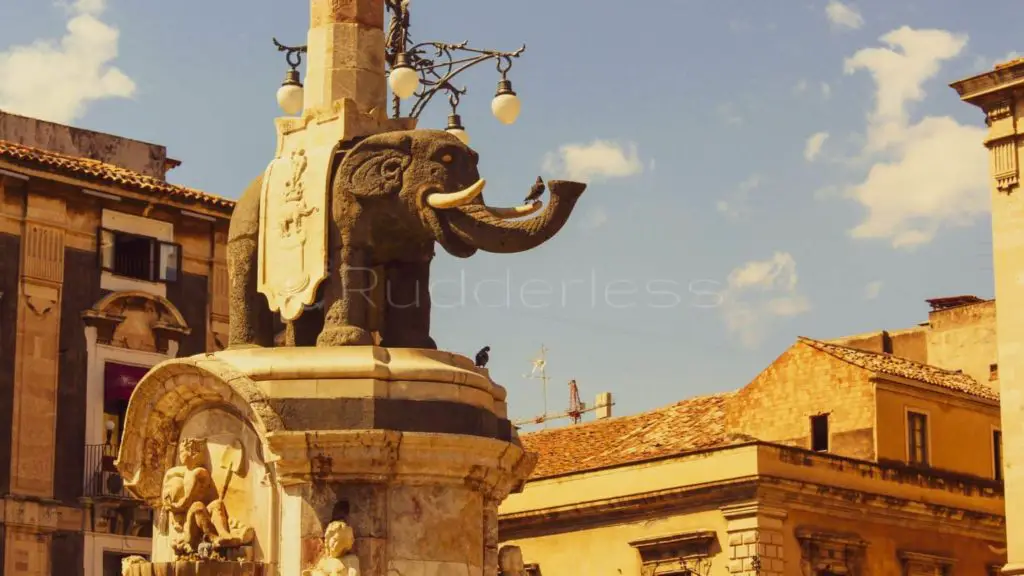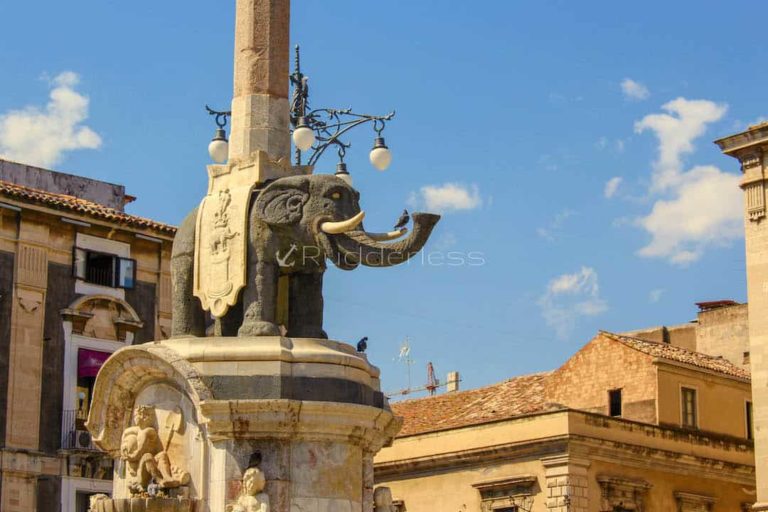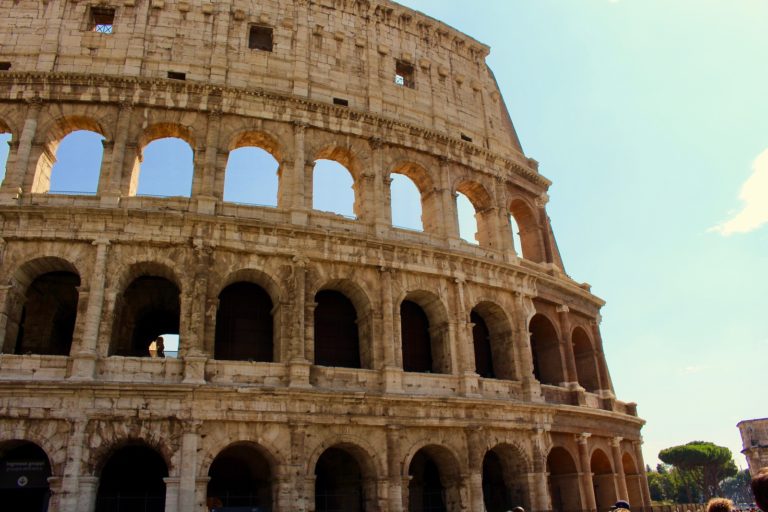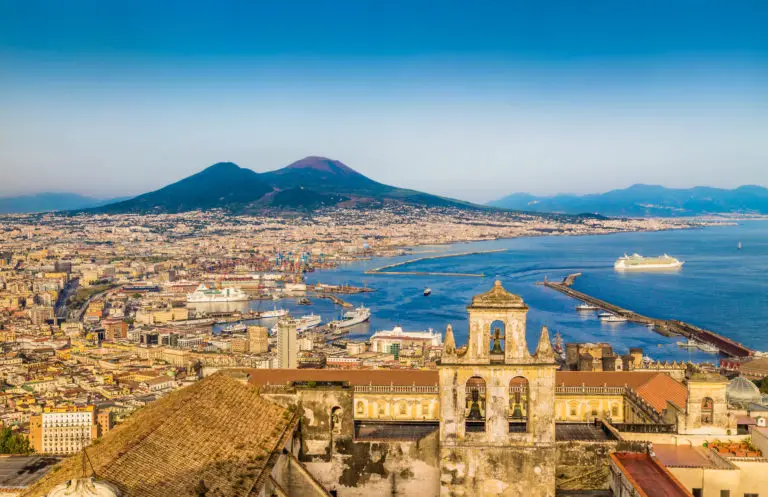How to Spend an Awesome Weekend in Syracuse Sicily
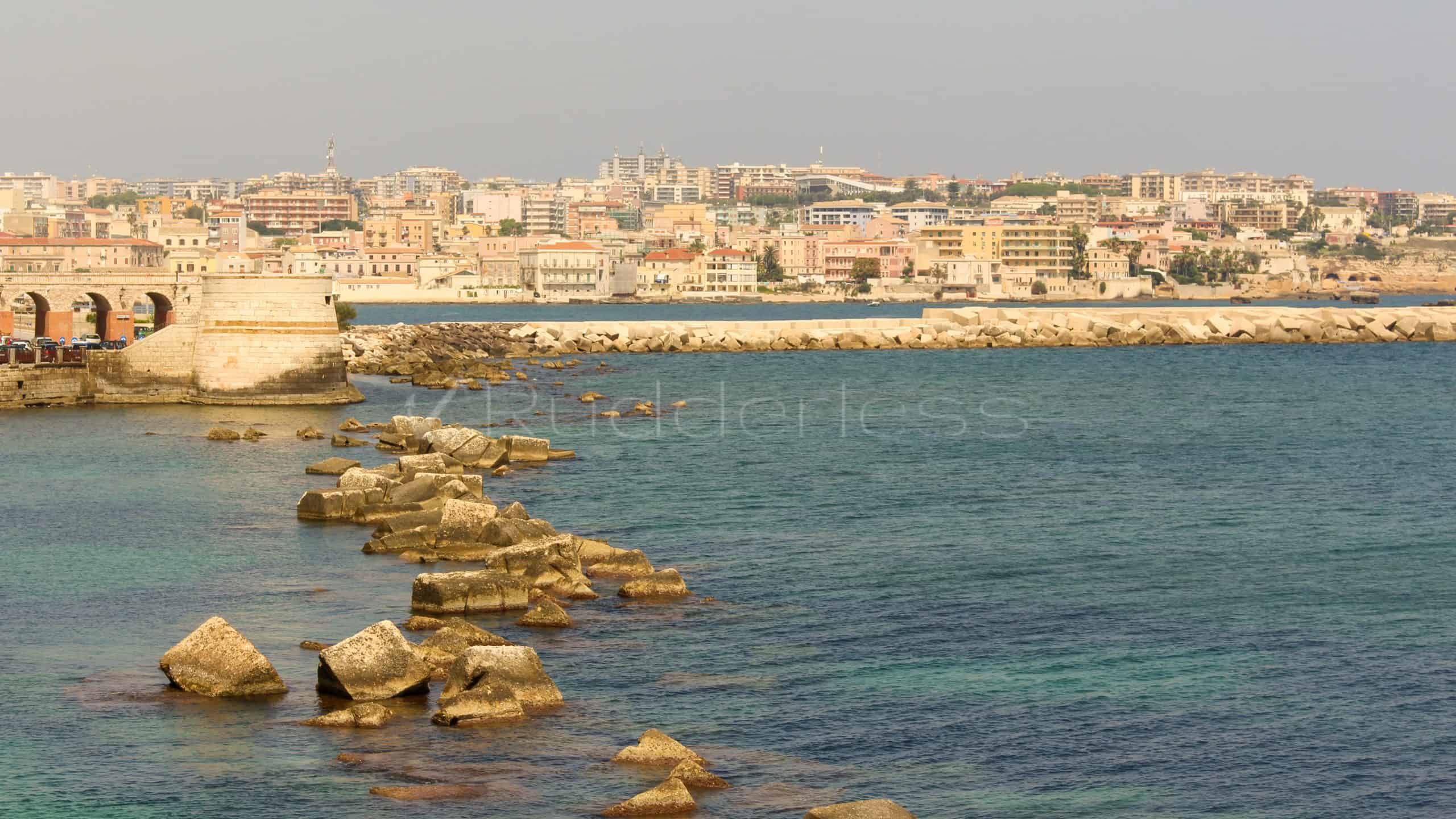
When I spent a weekend in Syracuse, Sicily, it was purely fueled by The Godfather (you know, other than the fact that I was already in Malta).
At the beginning of one of my YouTube videos about Syracuse, a girl is playing the Godfather theme on the accordion; one commenter even said: “For a country that claims The Godfather stereotypes them, they know how to capitalize on it.”
But it’s for a good reason! I can never seem to get enough of Italy. I’m not sure if it’s the food, the history, the gorgeous cathedrals, or the beautifully animated language. When I look at all the places I’ve travelled to, the majority have been in Italy – and with Malta being so close to the Italian island of Sicily, I couldn’t resist.
If you’re getting ready to spend a weekend in Syracuse, Sicily, this itinerary is designed just for you.

A Bit of Syracuse History!
Just when I thought I was out…they pull me back in
- Syracuse Italy or Siracusa Italy is a 2,700-year-old, historic city on the island of Sicily, most notable for its Greek and Roman history, culture, amphitheatres and architecture.
- Siracusa Italy is the birthplace of a mathematician and engineer named Archimedes
- Syracuse Sicily was one of the major powers in the Mediterranean world and played a key role during ancient times.
- The city was founded by Ancient Greek Corinthians and Teneans and once equalled Athens in size during the fifth century BC
- Today the city is listed by UNESCO as a World Heritage Site along with the Necropolis of Pantalica.
- Interesting fact: Syracuse is mentioned in the Bible in the Acts of the Apostles “The patron saint of the city is Saint Lucy; she was born in Syracuse and her feast day, Saint Lucy’s Day, is celebrated on 13 December”
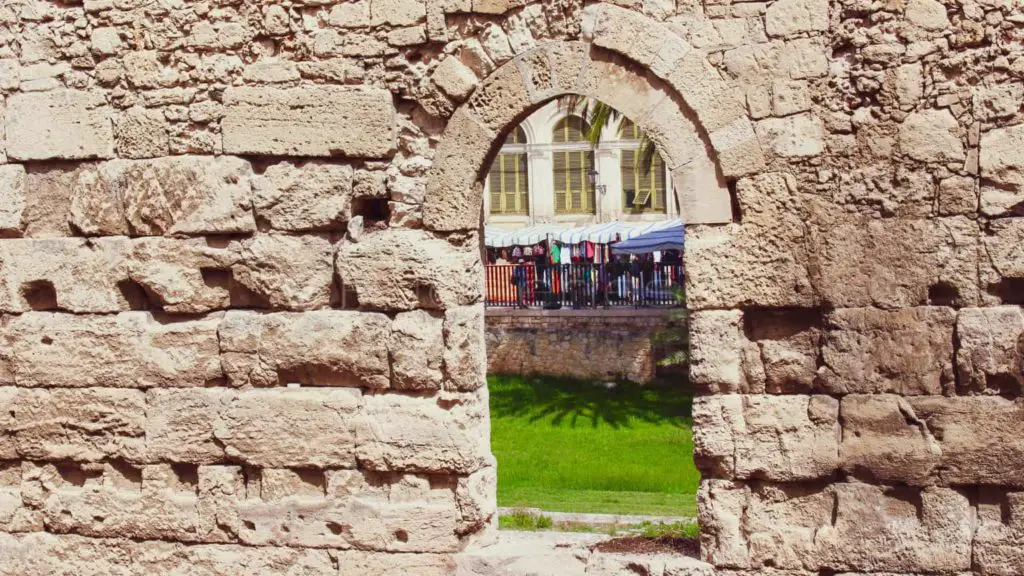
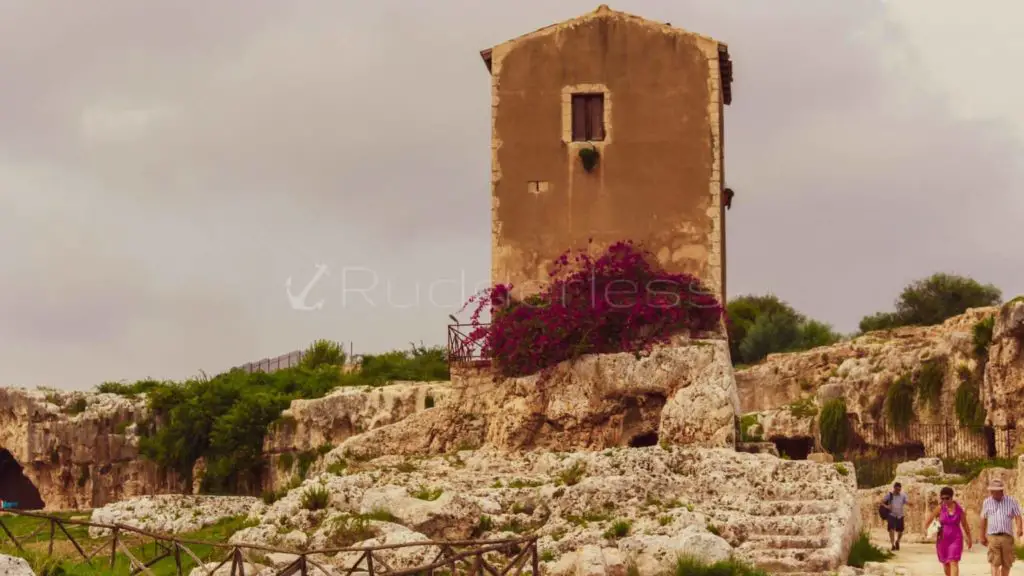
Places To Stay In Syracuse, Italy
The room I found in Syracuse is no longer available for booking. It was a real simple room with everything I needed, including a much-needed washing machine. I remember wandering around Syracuse in the evening the night I arrived looking for a store that sold detergent – which I eventually found in a convenience store.
Alla Giudecca was my second choice. Trust me it took a lot of debating between the two properties but in the end, the deciding factor was the price. If you go to Syracuse and choose this property please let me know what I missed out on…
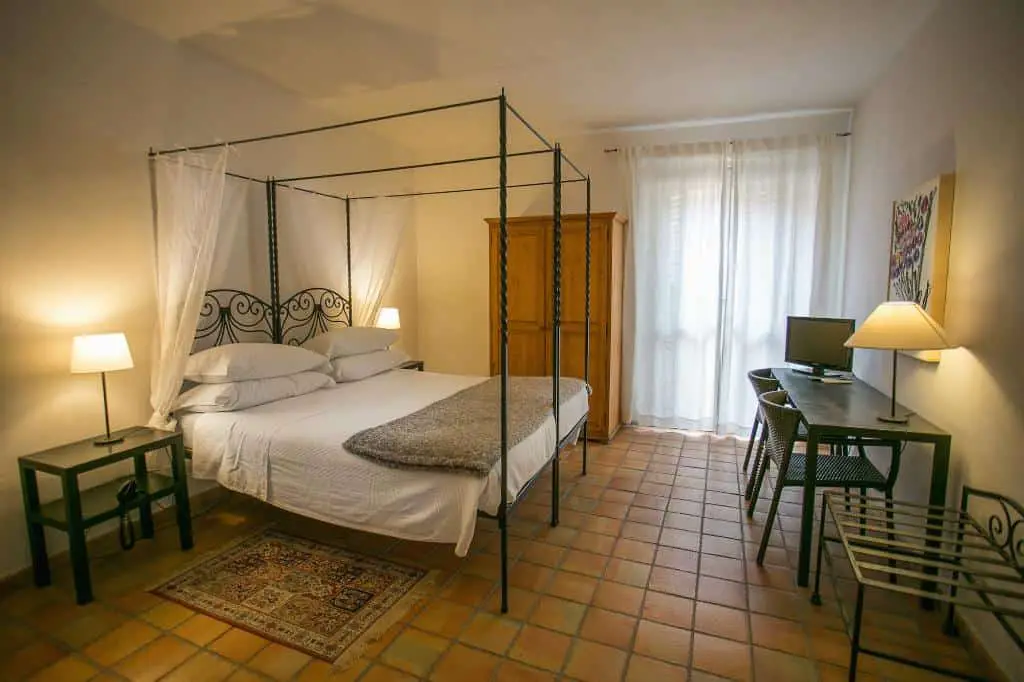
Casa Alla Giudecca
Alla Giudecca is located in a restored 15th-century building on Ortigia Island, Syracuse’s historic centre and just metres from the sea. The rooms are spacious, air-conditioned and come with a living area and a small kitchenette.
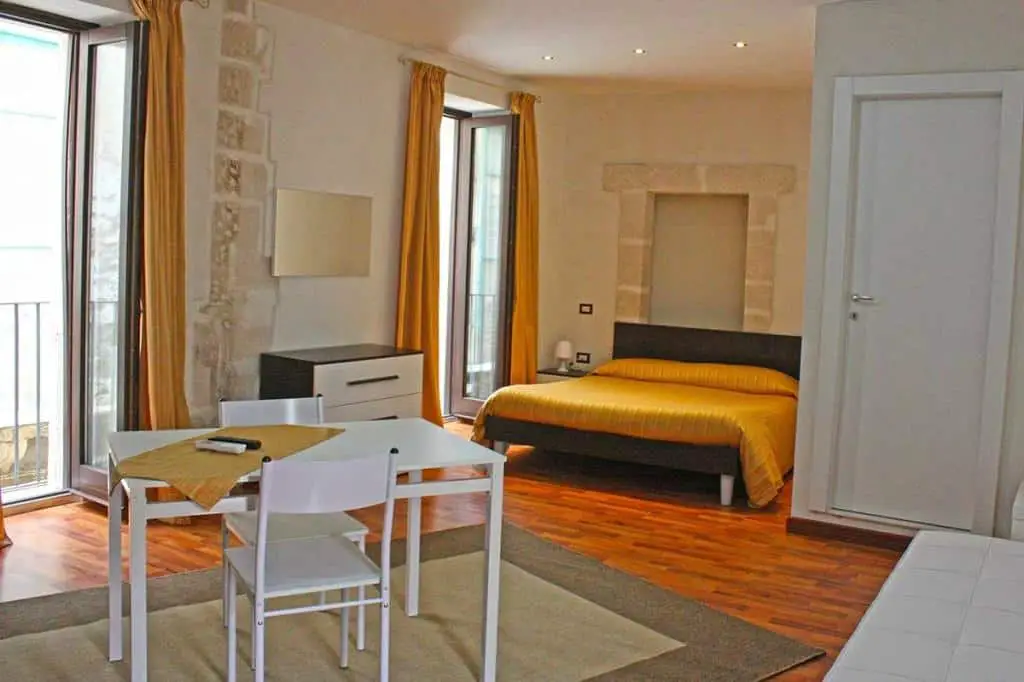
Atrio Casa Vacanza B&B
Atrio has free Wi-Fi access with a flat-screen tv, and air conditioning. Extras include satellite channels and cable channels but if you’re like me then you’ll probably be out at the beach most of the day.
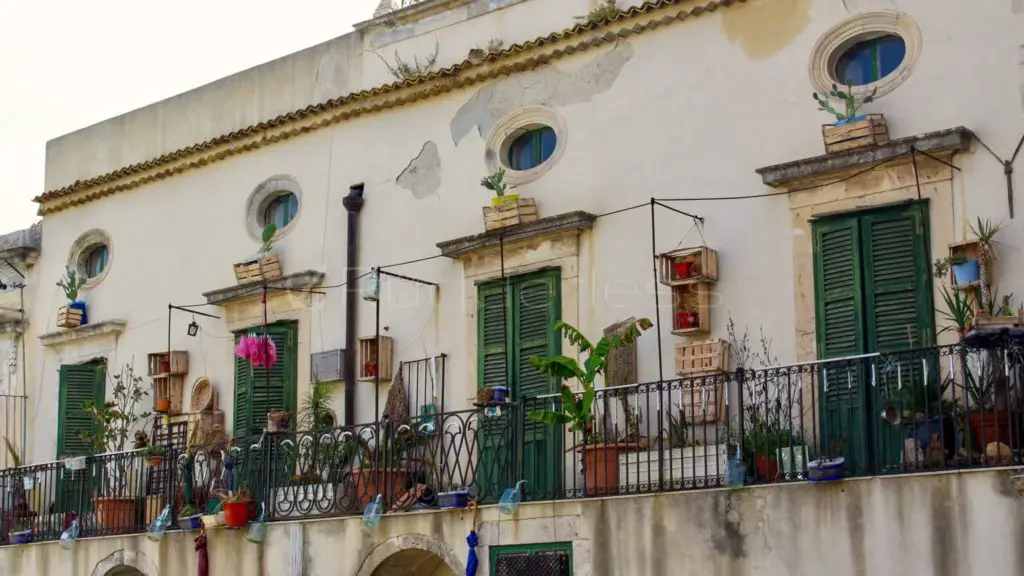
Getting to Syracuse
Plane
Sicily has four international commercial airports, Palermo, Catania, Comiso and Trapani, and two domestic airports serving mainland Italy, Lampedusa and Pantelleria.
To reach Syracuse, you need to book a flight to one of Sicily’s two main international airports, Palermo or Catania. Catania is the nearest airport to Syracuse at about 60 km south of the city. Palermo, on the other hand, is 35 km northwest of Sicily’s capital Palermo, and 278 km from Syracuse.
Train
From Catania airport, the AMT Alibus runs into the city centre and train station every 20 minutes (with a 20-minute journey time) between 5 am and midnight; tickets cost €4.
Boat
If you’re coming from Malta as I did, there are two ferry routes.
Grimaldi Lines operates a total of 20 sailings per week from Valletta to Pozzallo while Valletta to Catania runs 1 time per week.
Virtu Ferries operates 2 routes, Valletta to Catania which runs 7 times per week & Valletta to Pozzallo about 12 times weekly. I went to Pazzallo and took a taxi up to Syracuse.
Unfortunately, I don’t remember how much it cost – but I do remember splitting the bill with three other passengers.
Bus
Buses to Syracuse and Taormina are run by Interbus (interbus.it). There are two bus companies that are active in Syracuse: the small shuttle busses “Siracusa d’amare”, are very useful for tourists and the local bus company AST which covers the whole town and the outer districts of Belvedere, Cassibile and Fontane Bianche.
Syracuse, Sicily: Day 1
Ortigia Sicily
All of Day 1 takes place on the small island of Ortigia, Sicily or Ortygia Sicily which happens to be the historical centre of Syracuse, Sicily.
- The island is also known as the Città Vecchia (Old City) and contains several historical landmarks.
- The name Ortigia originates from the ancient word “ortyx” (ὄρτυξ) which means “Quail”.
- Although there are cars on the island they are few and far between. I would say it’s equally pedestrian and Vespa-friendly (Scooters fit the best in some of those narrow streets)
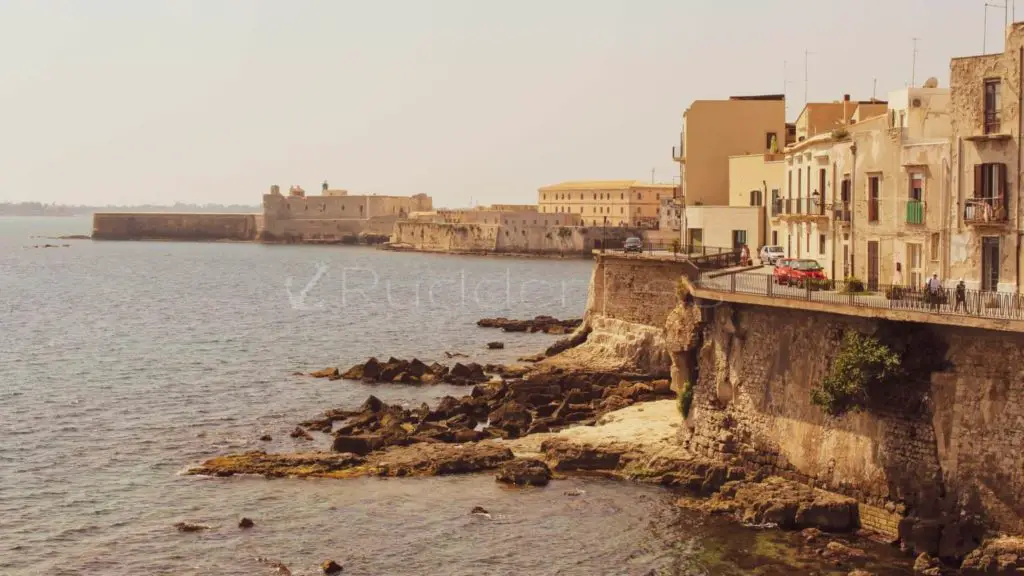
Caffe Letterario Siracusa
Caffe Letterario Siracusa is a reputable Italian café located right behind the Temple of Apollo.
I have to admit that I immediately fell in love with the beautiful, brunette barista who brought me my espresso every morning. I loved watching as she greeted everyone, shared a laugh and got them going with their morning coffee.
I spent far too much time here
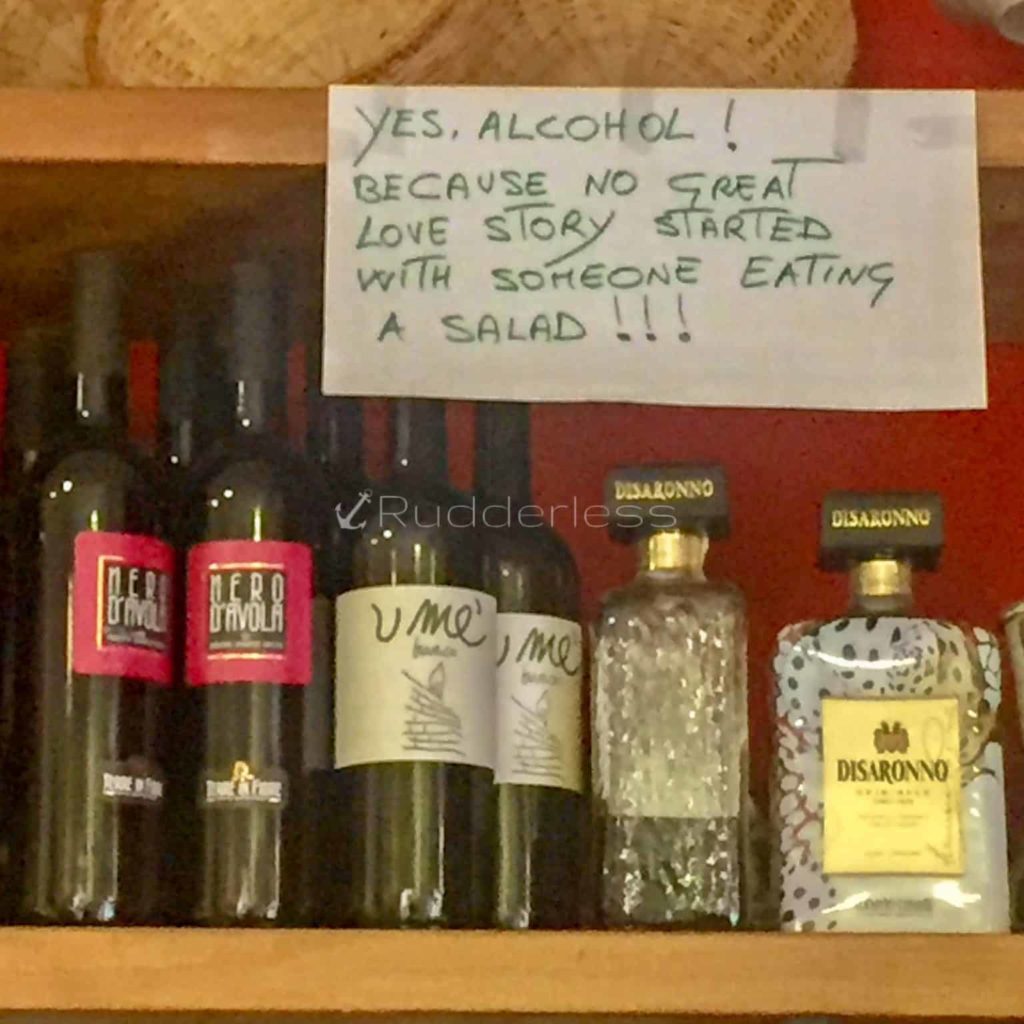
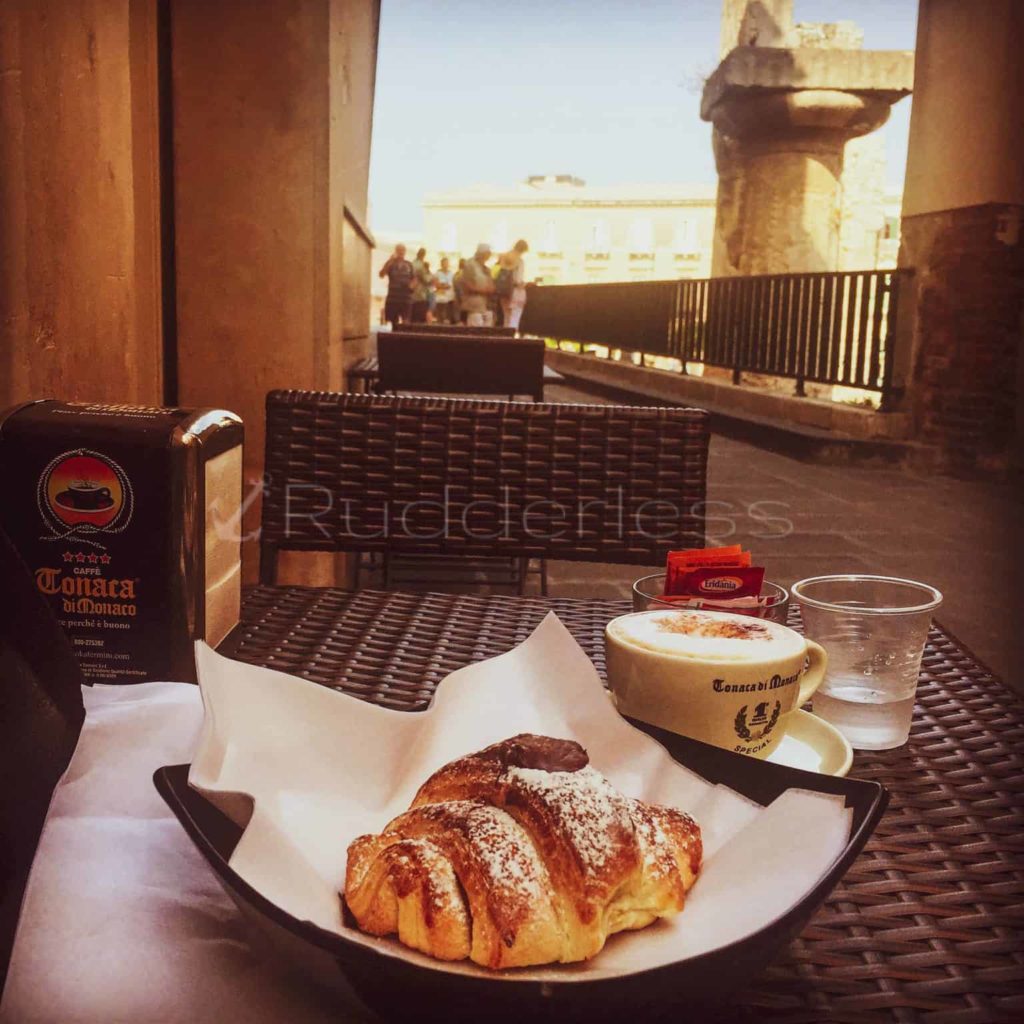
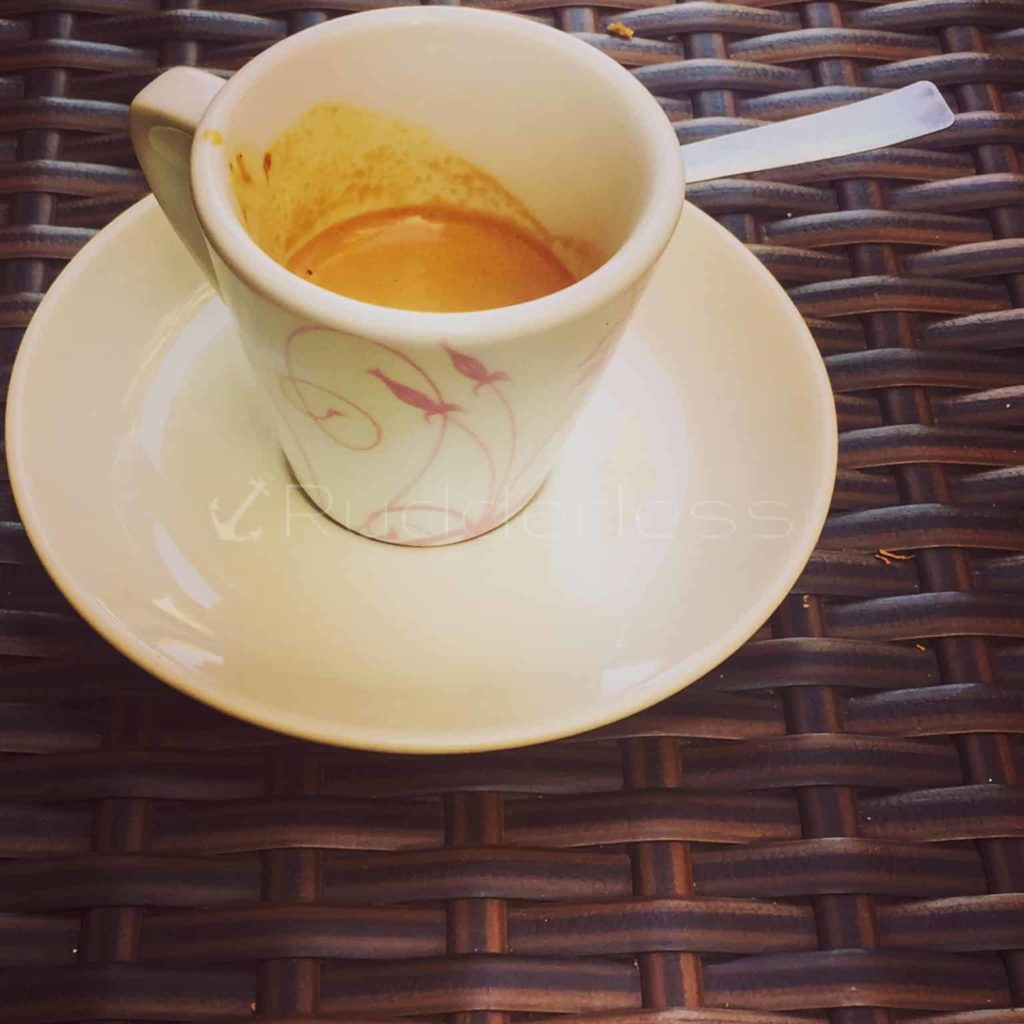
Forte Vigliena
Forte Vigliena is an easy-to-access dock right on the Mediterranean Sea. With an open staircase and wooden dock, it is the perfect location for sunbathing or simply relaxing under the sun.
For one, I’m dark enough, so I’ll pass on the sunbathing. however, relaxing under the sun is tempting but – I opted to get moving…
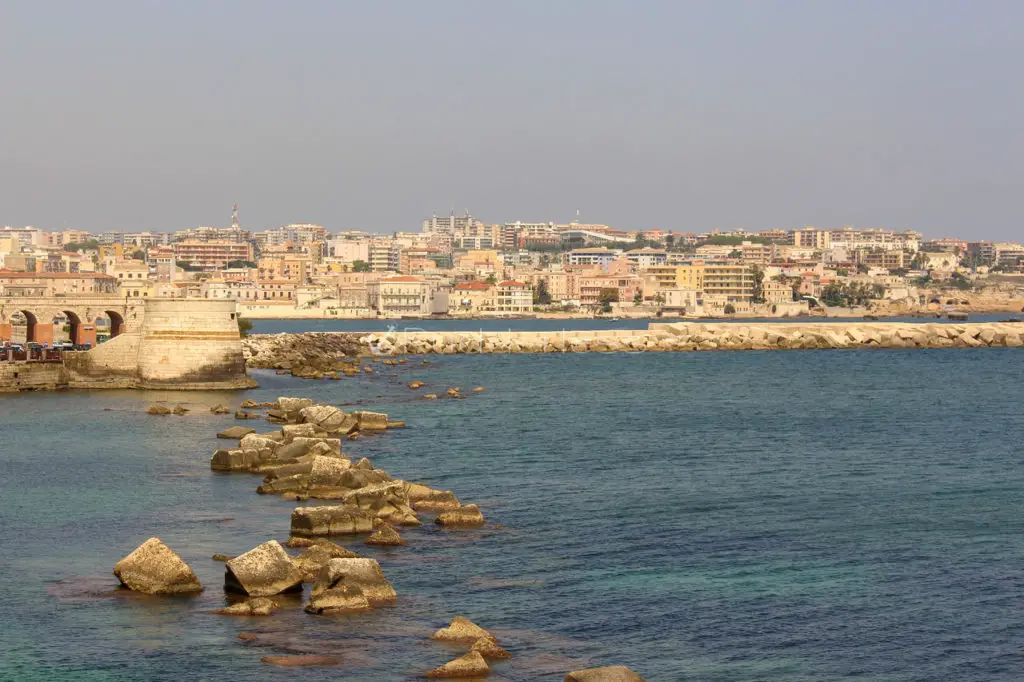
Castello Maniace
Castello Maniace was built between 1232 and 1240 during the rule of Frederick II, the Holy Roman Emperor. The name Castello Maniace comes from an earlier fort on the same site that was built by George Maniakes, the Byzantine Greek general who seized Sicily from the Arabs in 1038.
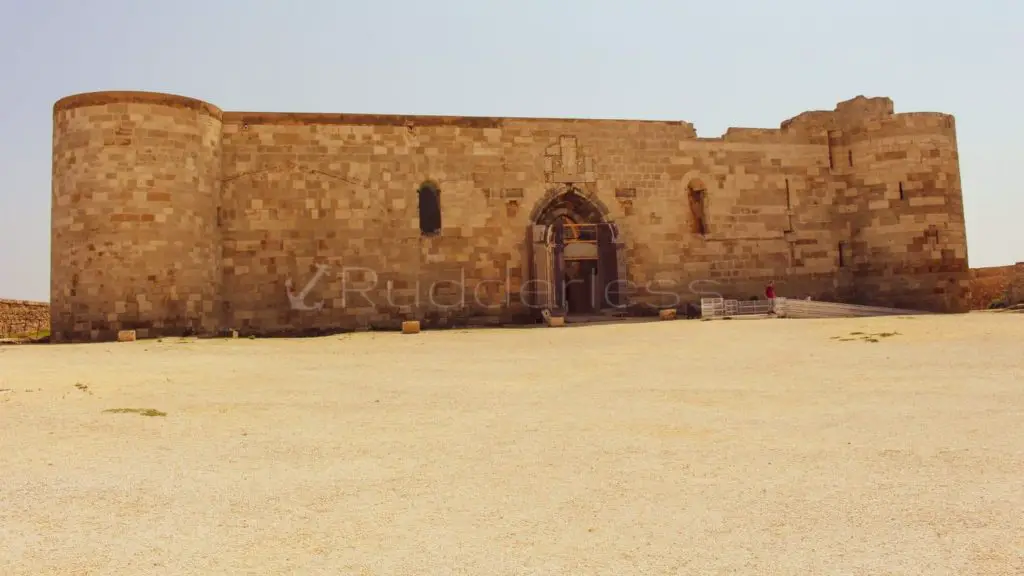
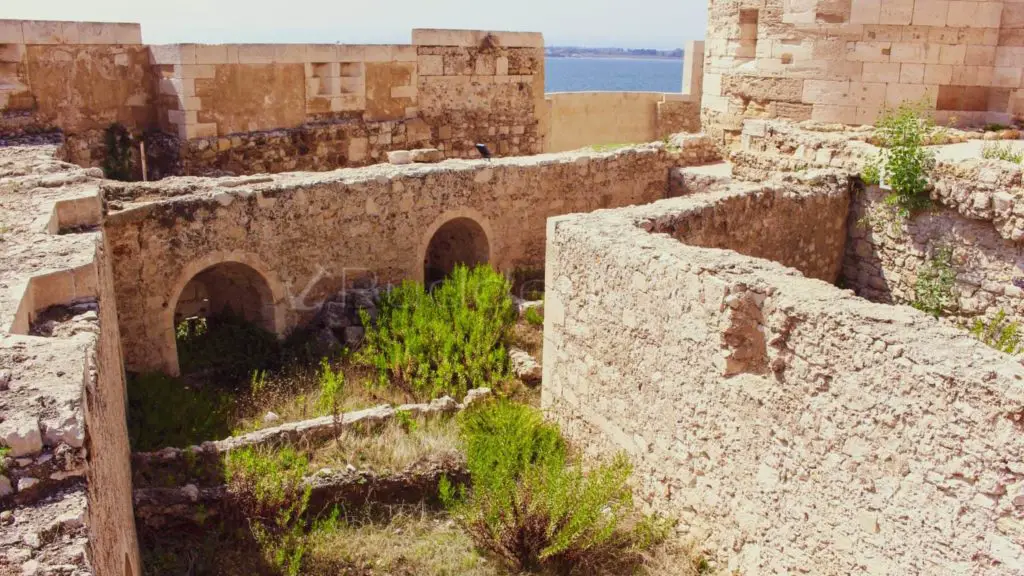
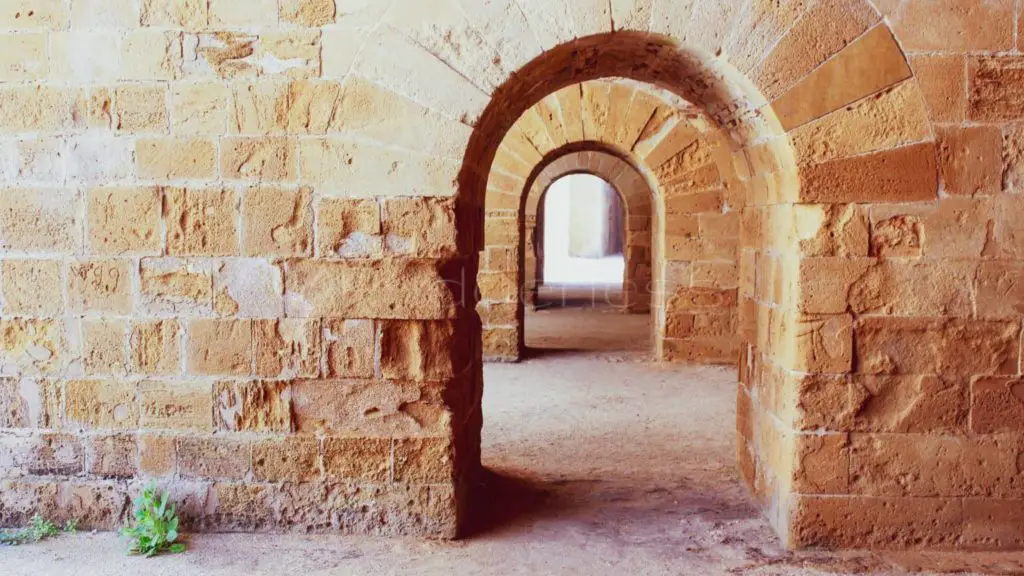
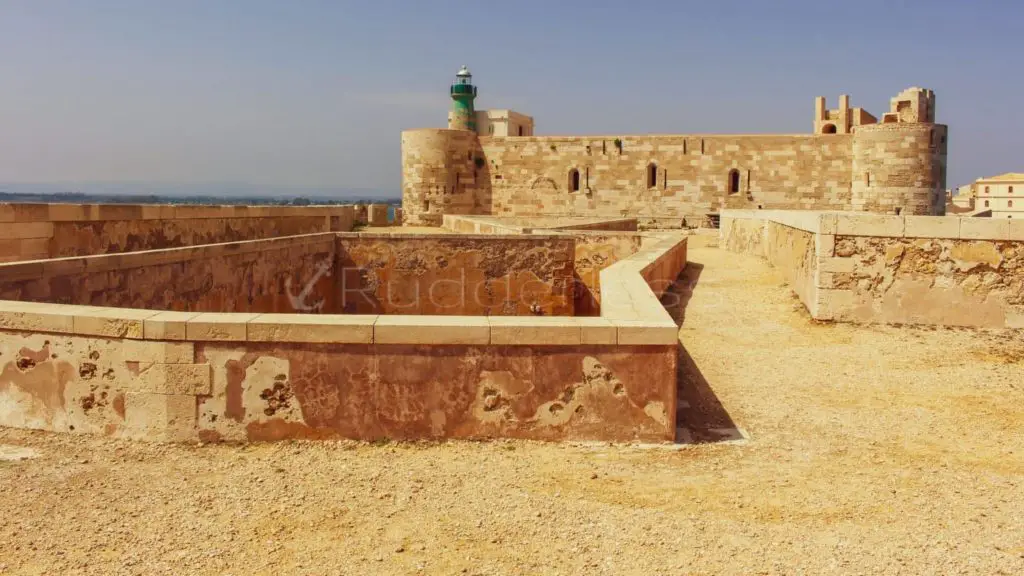
Fountain of Arethusa
When I first saw this, admittedly I wasn’t really sure what was going on but the Fountain of Arethusa is a freshwater spring that’s surrounded by wild papyrus. According to Greek myth, the fountain is believed to be the place where an Arcadian nymph named Arethusa resurfaced after fleeing from an obsessed lover Alpheus- God of Rivers.
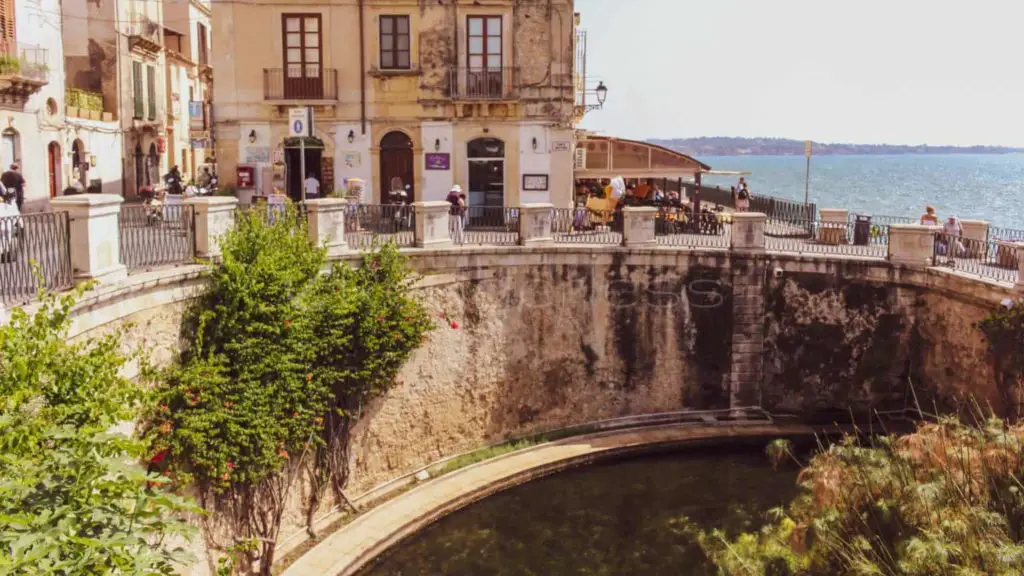
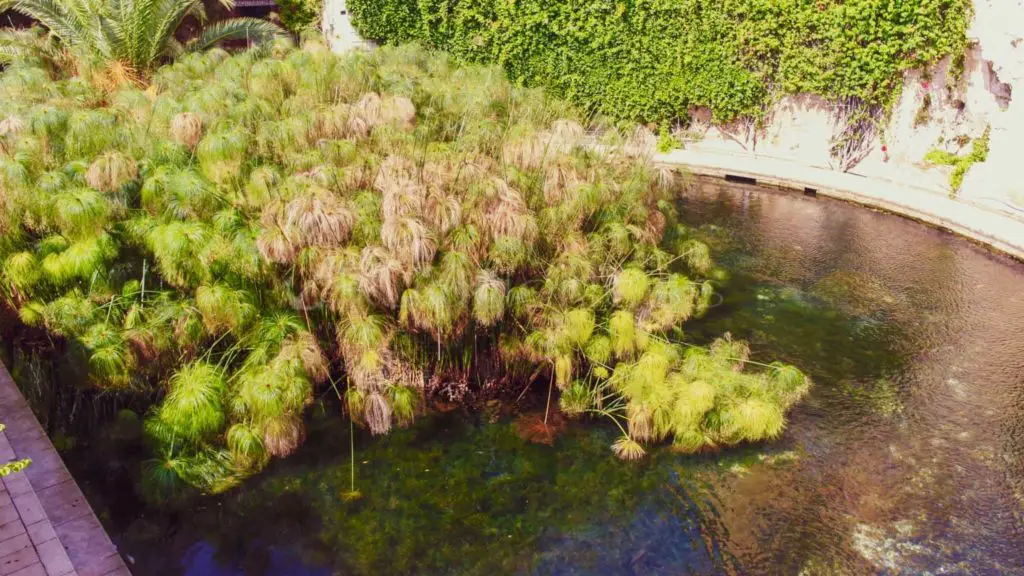
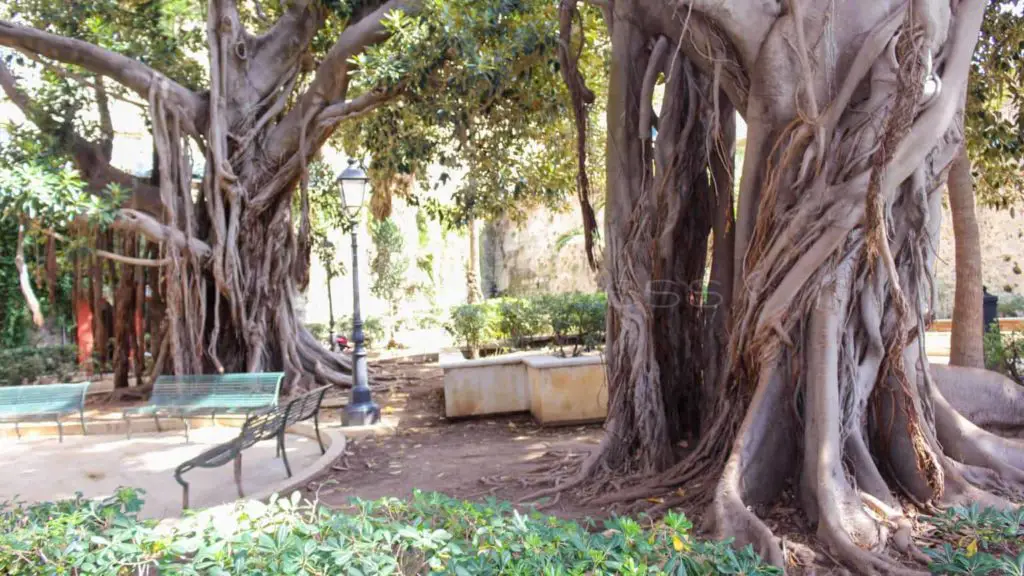
Piazza Duomo
The Piazza Duomo is a true testament to the baroque architecture of Syracuse. The rectangular plaza was constructed on the site of an ancient acropolis that dates back to the Greek occupation of Syracuse.
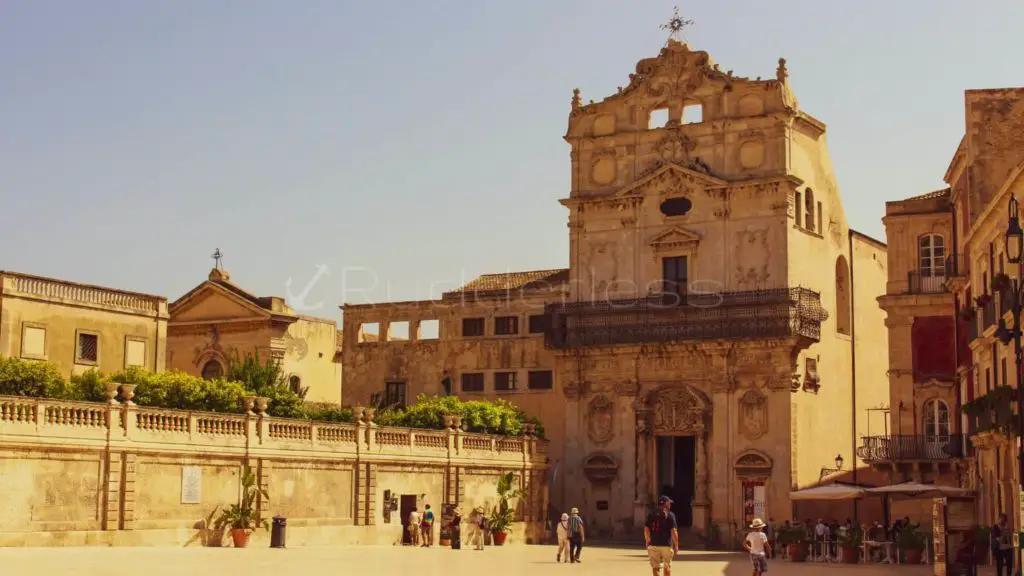
Cattedrale Metropolitana della Natività di Maria Santissima
Also known as the Cathedral of Syracuse (Siracusa), the Cattedrale Metropolitana Della Natività di Maria Santissima – the Italians have this way of giving their cathedrals these long, beautiful names, is a Baroque-style cathedral. It was commissioned by Roman Catholic Bishop Zosimo in the 7th century and is built over the Temple of Athena. It is now the seat of the Roman Catholic Archdiocese of Siracusa.

Fontana di Diana
The Fontana di Diana is a fountain, created by Giulio Moschetti in 1907 and located in Piazza Archimede. Giulio Moschetti’s portrays various statues in the fountain but the main statue is the goddess Diana – goddess of the hunt.
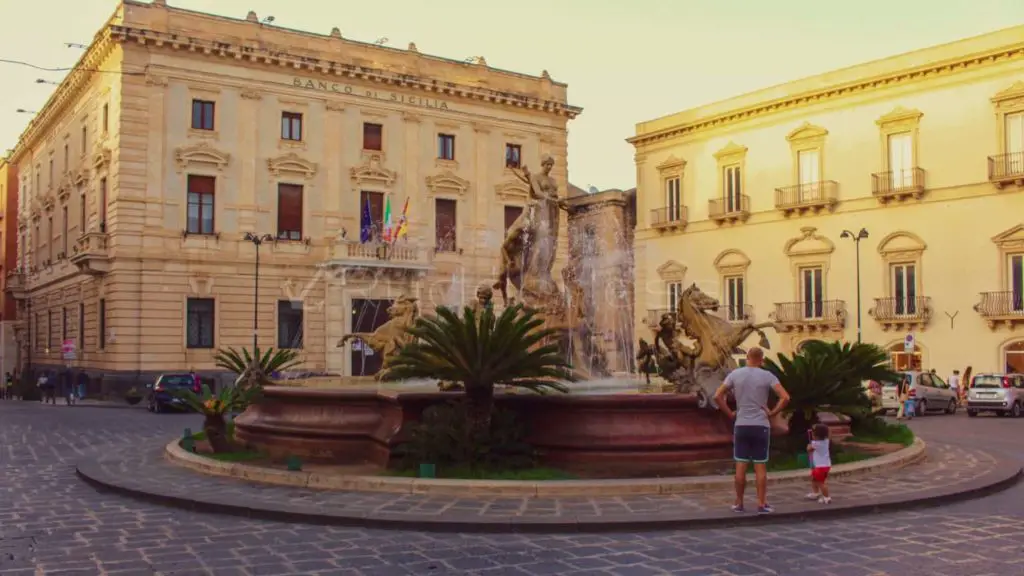
Sicilia in Tavola
Sicilia in Tavola is one of the longest-standing restaurants in Ortigia, Syracuse. It has earned a reputation for serving amazing homemade pasta and seafood. Dishes like fettuccine allo scoglio (pasta ribbons with mixed seafood) and the equally fine prawn ravioli, paired with sweet cherry tomatoes and chopped mint, are favourites. I suggest reservations but I happened to pass by just as another couple was leaving and didn’t have to wait.
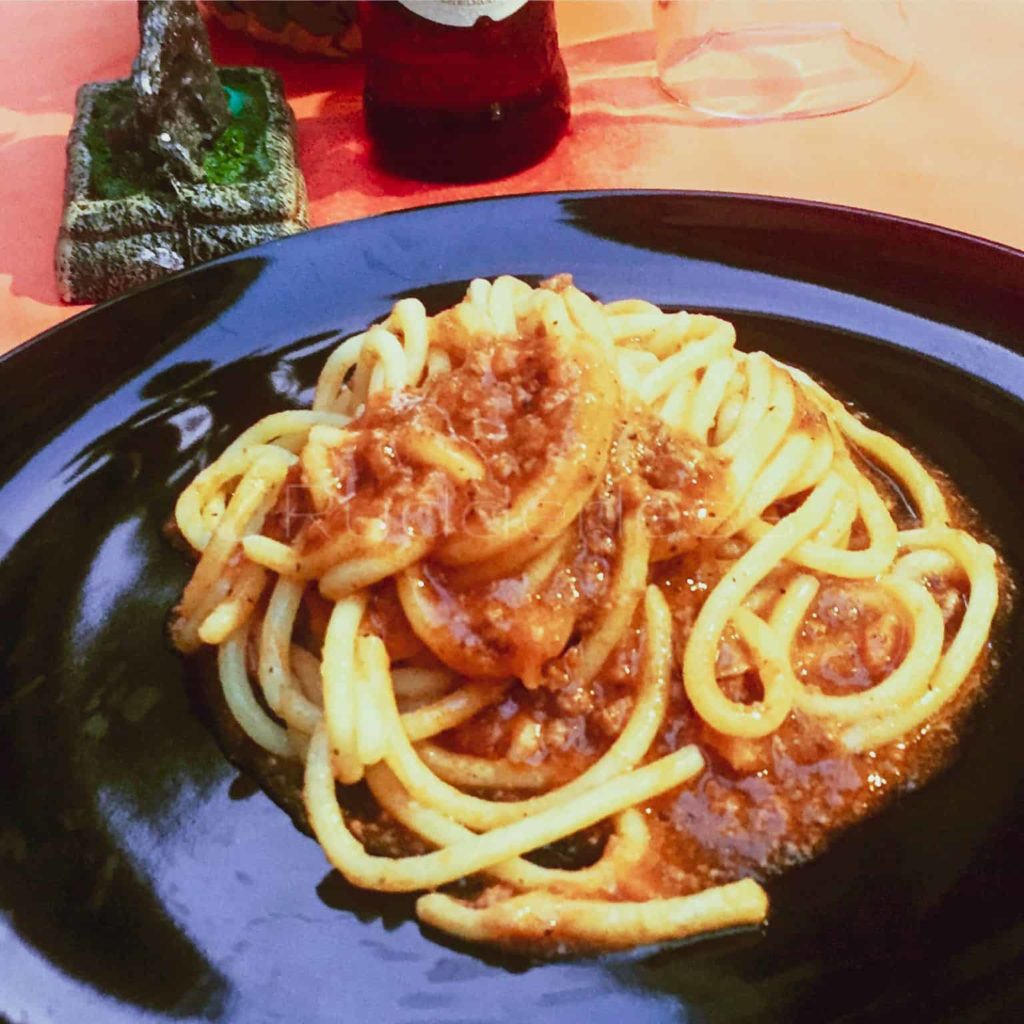
Porta Urbica
The Porta Urbica was originally a gateway to the fortress of Ortigia, built on the orders of Dionysius the Great. Visitors can see the ruins of an extensive wall that once protected Syracuse.
Syracuse, Sicily: Day 2
Temple of Apollo
The Temple of Apollo was originally a Greek temple that dates back to as early as the 6th century BC and is the oldest known Doric temple in Western Europe. The temple was transformed into a Byzantine church, later seized by the Muslims which converted it into a mosque, then it was seized by the Normans, who converted the temple back into a church.
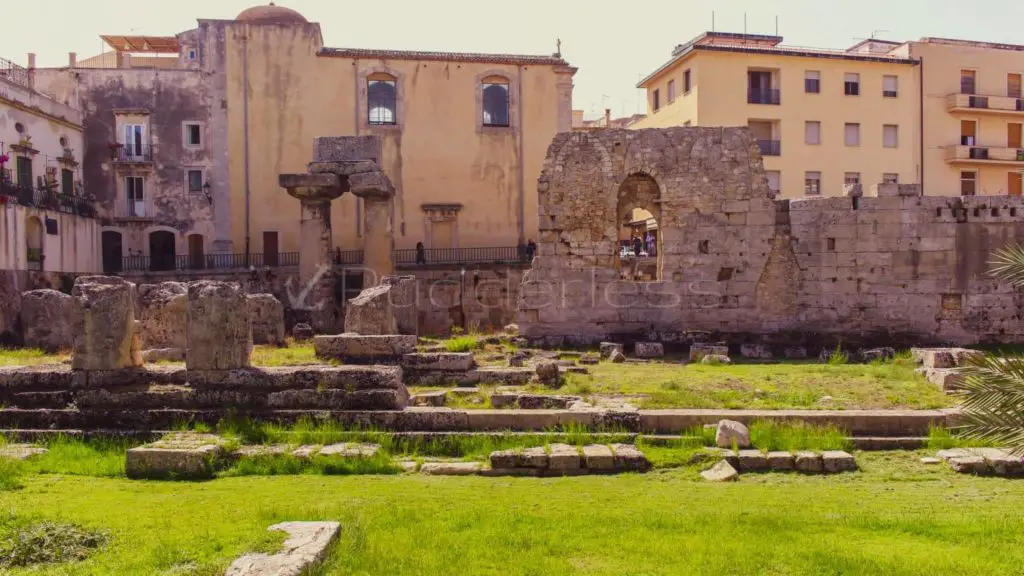
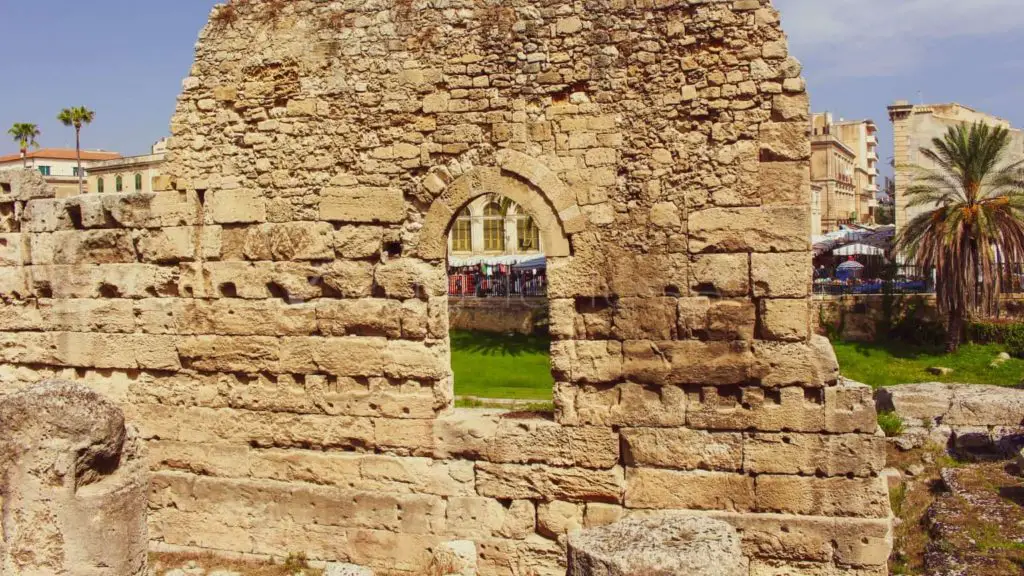
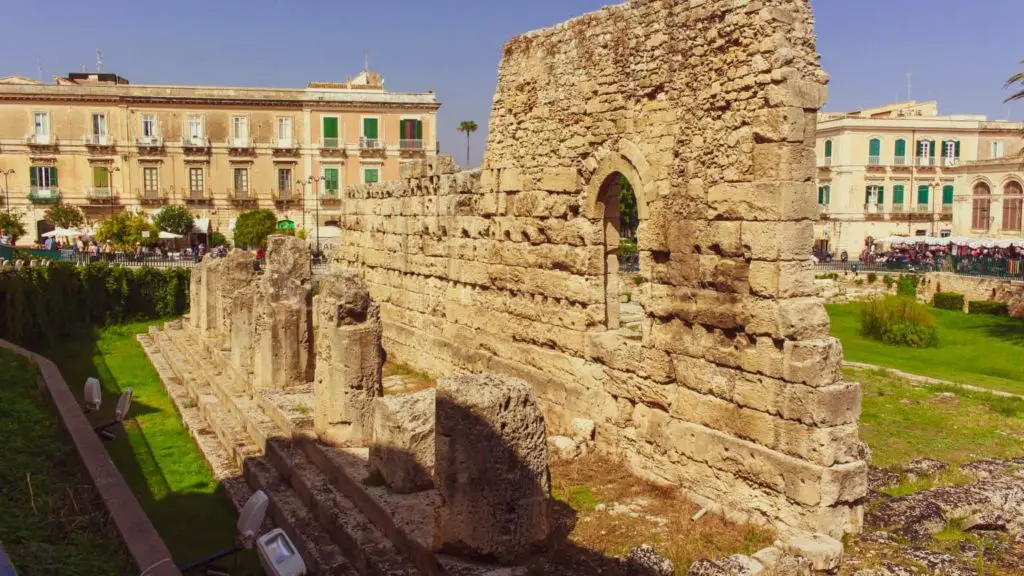
Old Market of Ortigia
I love the markets. Its hands down the best way to get to know a place and its culture – this market is no exception with its sites and sounds that are authentically Italian. Italian markets, in general, are a must in my opinion. The historic Ortigia market is one of Syracuse’s most popular attractions. Every morning (Monday- Saturday), vendors sell all sorts of artisanal sandwiches, cured meats, fresh Mediterranean salads, seafood and other delicious bites.
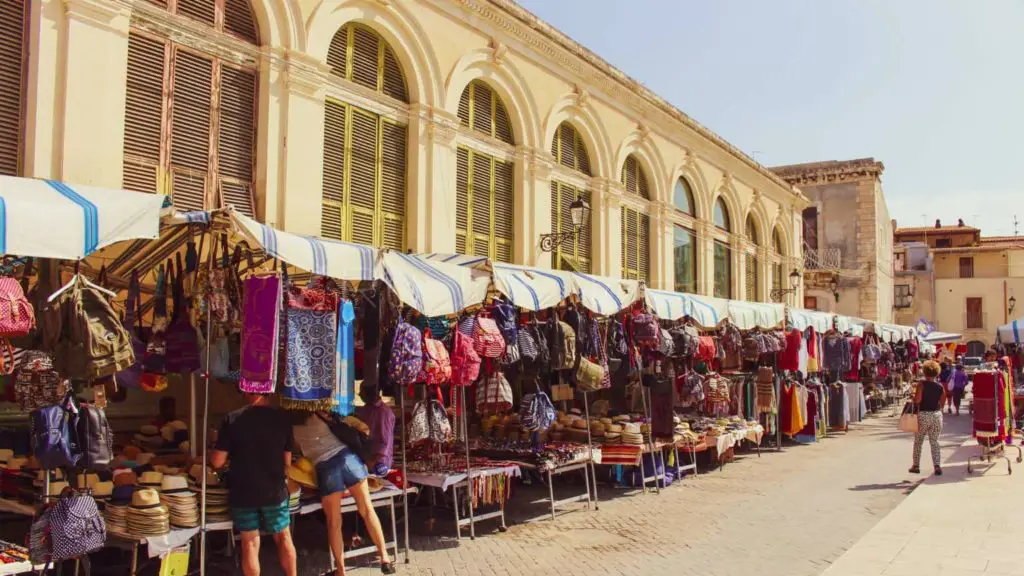
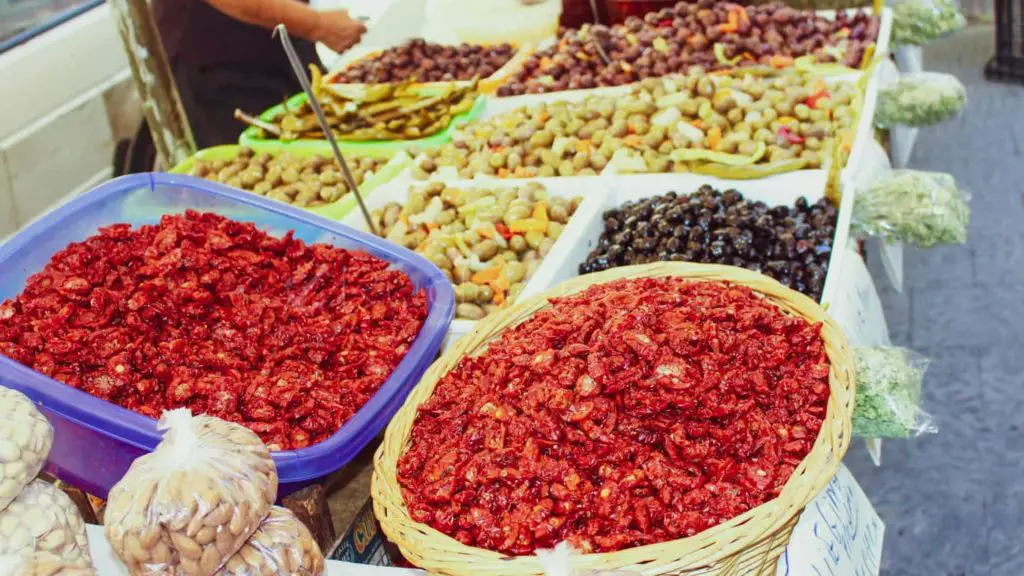
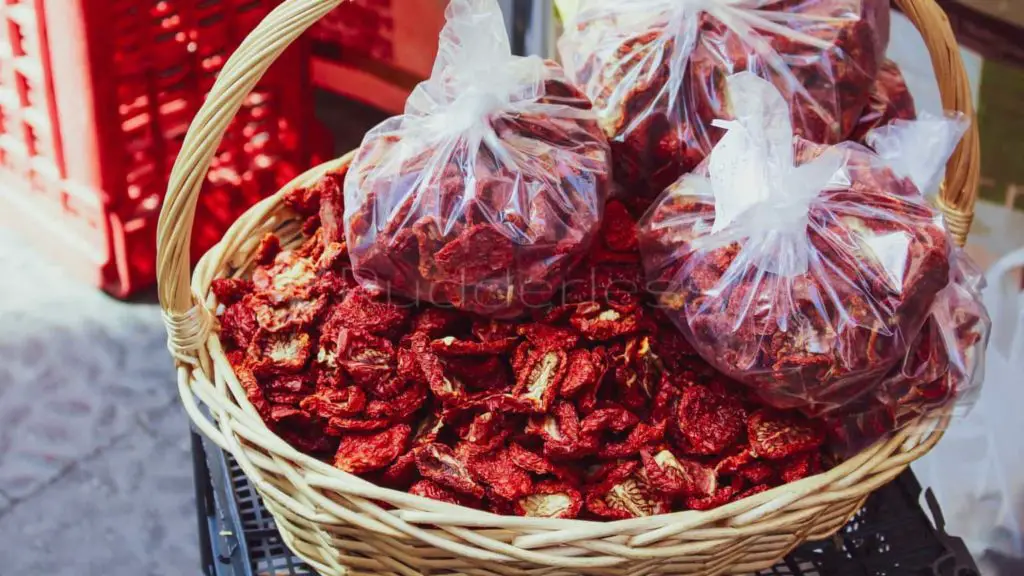
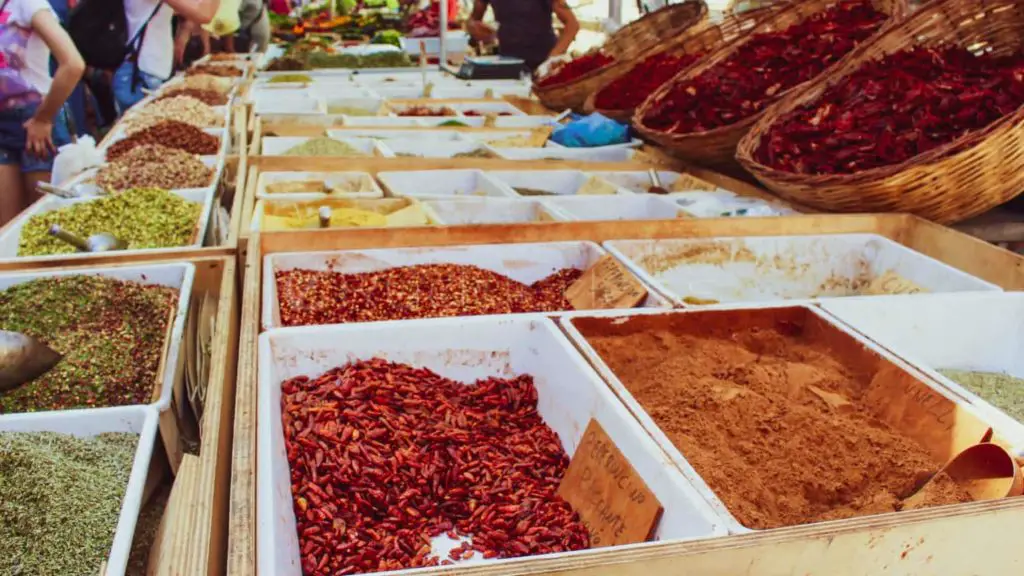
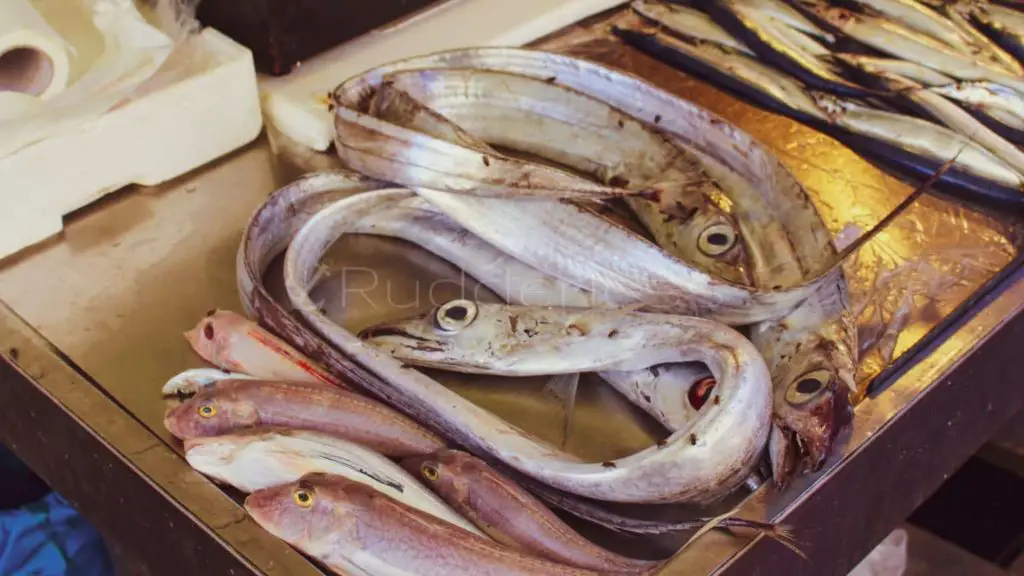
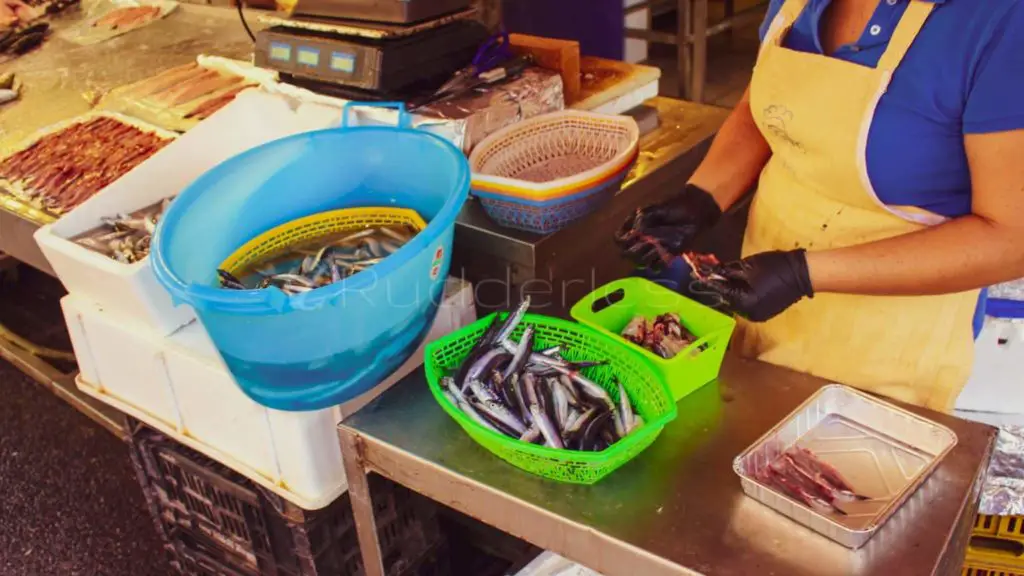
Chiesa Monumento Pantheon Dei Caduti Siracusa
Often regarded by the people of Syracuse as “the Pantheon”, the Chiesa Monumento Pantheon Dei Caduti Siracusa is a church dedicated to remembering the fallen soldiers of Syracuse during World War I.
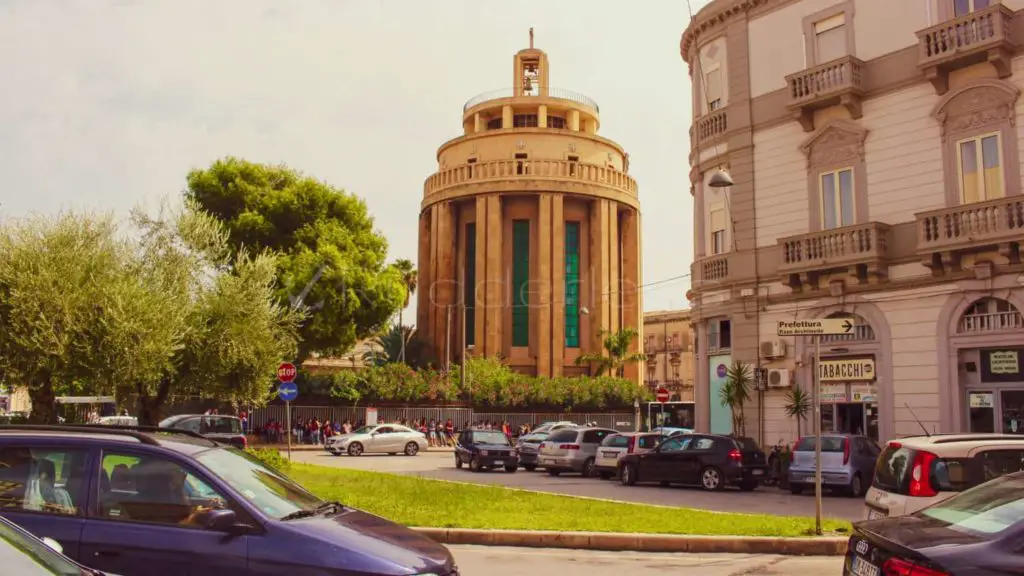
Archaeological Park Neapolis
This famous archaeological park has a unique feature: it contains both a Roman and Greek theatre. It is definitely one of the greatest archaeological excavations in Italy, dating back to as early as the 3rd century AD.
The main attraction of Archaeological Park Neapolis is its well-preserved Greek theatre, which is believed to date back to as early as the 5th century BC.
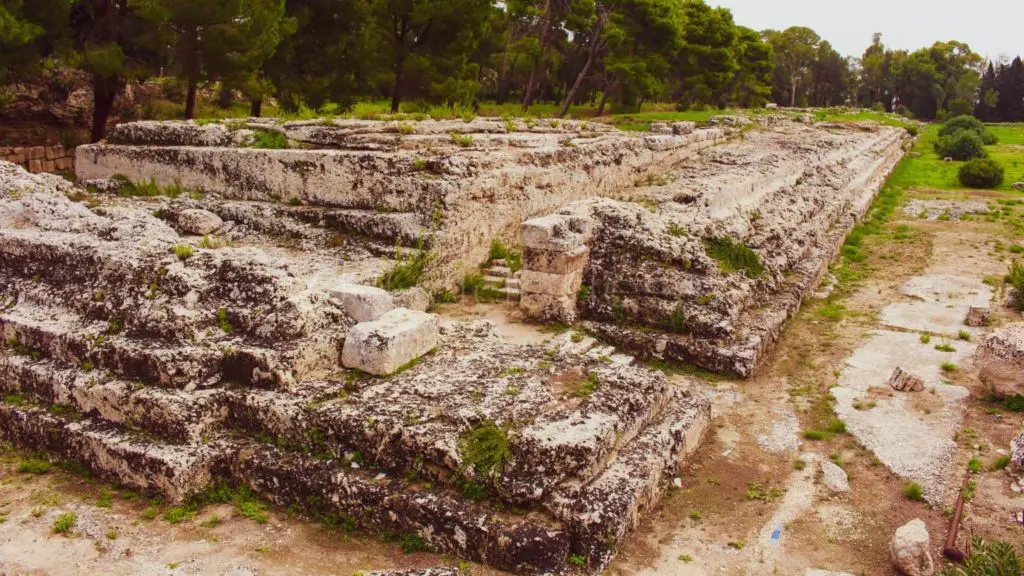
Syracuse Roman Amphitheater
The Syracuse Roman Amphitheater is one of the best-preserved structures in the city of Syracuse. This 1st-century Roman amphitheatre was once a flourishing arena that not only hosted awesome gladiator spectacles and was also likely used as a venue for Greek plays. Today, the theatre hosts an annual Greek Theatre festival, which is held from mid-May until the end of June.
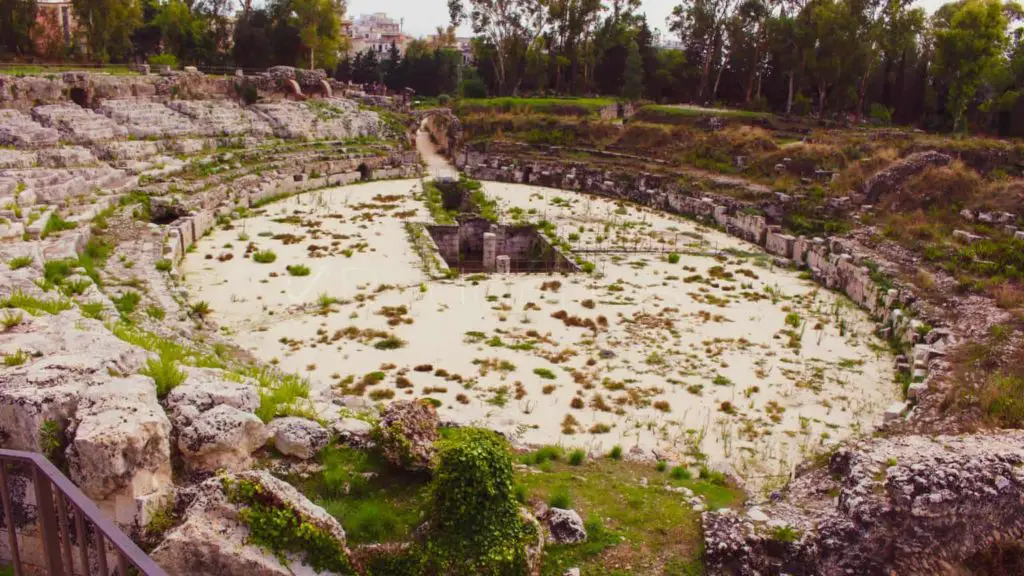
Grotta dei Cordari
Located inside the Latomia of Paradise is Grotta dei Cordari – also known as the Cave of Cordari. The Grotta dei Cordari is an artificial mine that stands with the assistance of multiple pillars that have been excavated in the rock itself. It was once used to make ropes due to the humidity of the cave but it’s also famous for the “light games” that were played inside by using natural lighting and shadows.
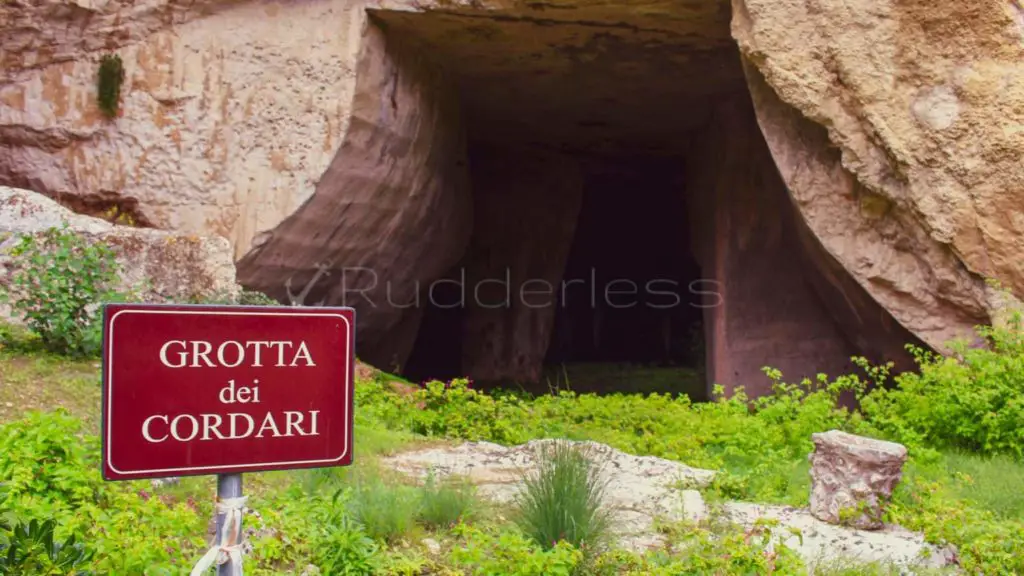
Ear of Dionysius
This teardrop-shaped cave is famous for its acoustic properties. The layout of the cave amplifies the quietest of sounds, which allows listeners to hear them from an opening at the top which is 72 feet above ground level.
The Ear of Dionysius’ gets its name from the Italian painter Caravaggio, who named the cave after a legend about Dionysius I. According to folklore, Emperor Dionysius I used the cave as a jail and would spy on prisoners from the opening at the top of the cave.
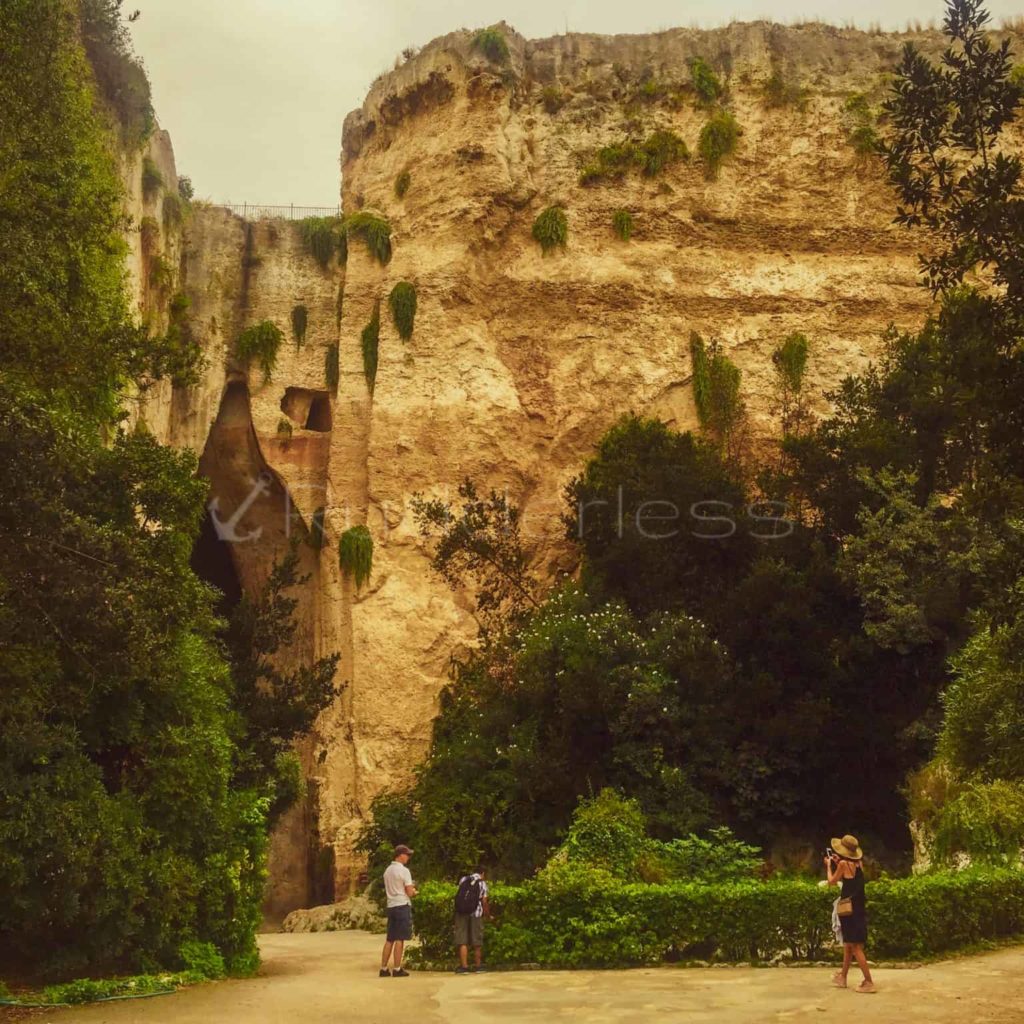
Latomie del Paradiso
Often called the “Latomies of Syracuse”, these limestone quarries were once, both a mining site and a “natural” prison for prisoners. Although the latomies have been exposed to millenniums of excavation and erosion, they are safe to traverse and are a popular attraction amongst tourists and locals.
Teatro Greco
Built in the early third century B.C, the Teatro Greco, also known as the ancient theatre of Taormina, is one of the most famous ancient Greek theatres – well-known for its horseshoe-shaped structure and backdrop of Mount Etna. This Greco-Roman theatre is split into three parts: the main stage, the orchestra and the auditorium.
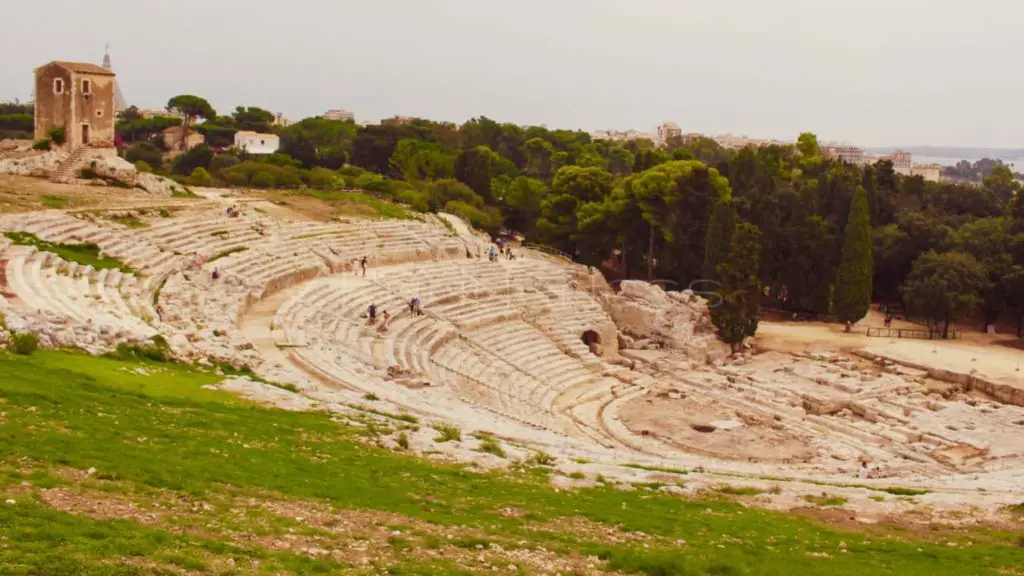
Teatro Greco Pizzeria & Grill & Coffee
I stumbled across these restaurants while exploring the complex with the Ear of Dionysius and the Teatro Greco. It’s a great and convenient choice if you’re looking to grab some delicious and authentic Sicilian bites while navigating the awe-inspiring attractions of ancient Italy.
I, however, went for a good old-fashioned burger – Don’t get upset I ate plenty of classic Italian dishes so I feel justified.
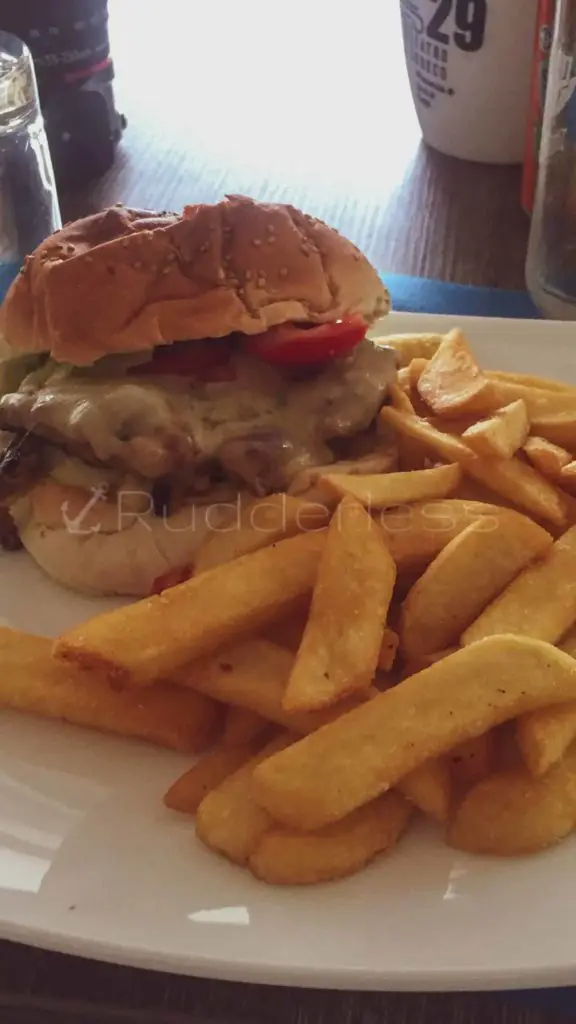
Syracuse & Ortigia, Sicily
Honestly, it’s very difficult to find anything wrong with any city, town or village in Italy. There is always some archaeological site getting discovered or a stunning cathedral/basilica with a beautiful story.
Siracusa was a city I was just planning on passing through in order to get to Catania for my flight back to Rome.
Once again Italy grabs you by the kahunas and doesn’t let go!
You know I couldn’t leave without one more Godfather reference – right?
A Day Trip From Syracuse
Malta
Malta is a beautiful island with absolutely perfect Mediterranean weather. I was there in Mid to Late September and it still felt like it was Summer.
From the Blue Grotto, Dingli Cliffs and Upper Barrakka Gardens, to the Blue Lagoon, Valletta, Gozo and Comino. The island of Malta and its capital city Valletta reminds me of the cities I would try to create with a shovel, bucket, dump truck and digger in a sandbox as a child. So with my 3 Days in Malta Itinerary, with its sandy-coloured buildings and structures, it is like reliving my childhood. Also if you’re a huge Game of Thrones fan, a lot of the scenes from the HBO hit show was filmed all around Malta so I put together The Ultimate Game Of Throne – Malta Locations
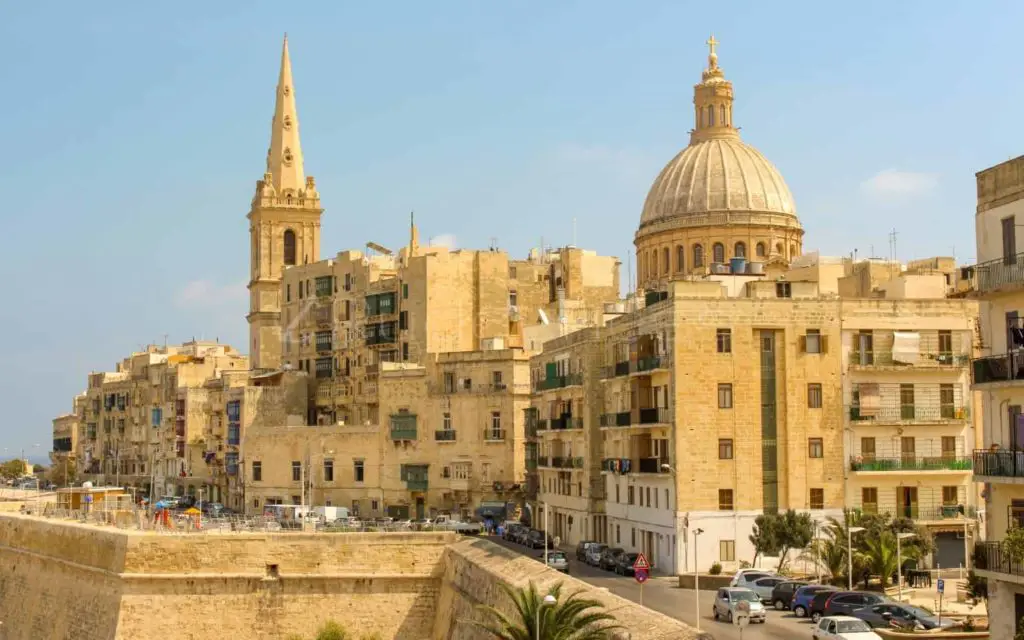
Catania
Catania is the second-largest city in Sicily after Palermo and is located on the east coast facing the Ionian Sea and is noted for its history, culture, architecture and gastronomy. The old town is one of the biggest examples of baroque architecture in Italy and it is a World Heritage Site, protected by UNESCO. I went out of my way to eat as much cannoli as possible and I suggest you do the same. I was passing through Catania on my way to Rome and decided to stay for a day and as I result in I put together Things To Do In Catania In 1 Day
